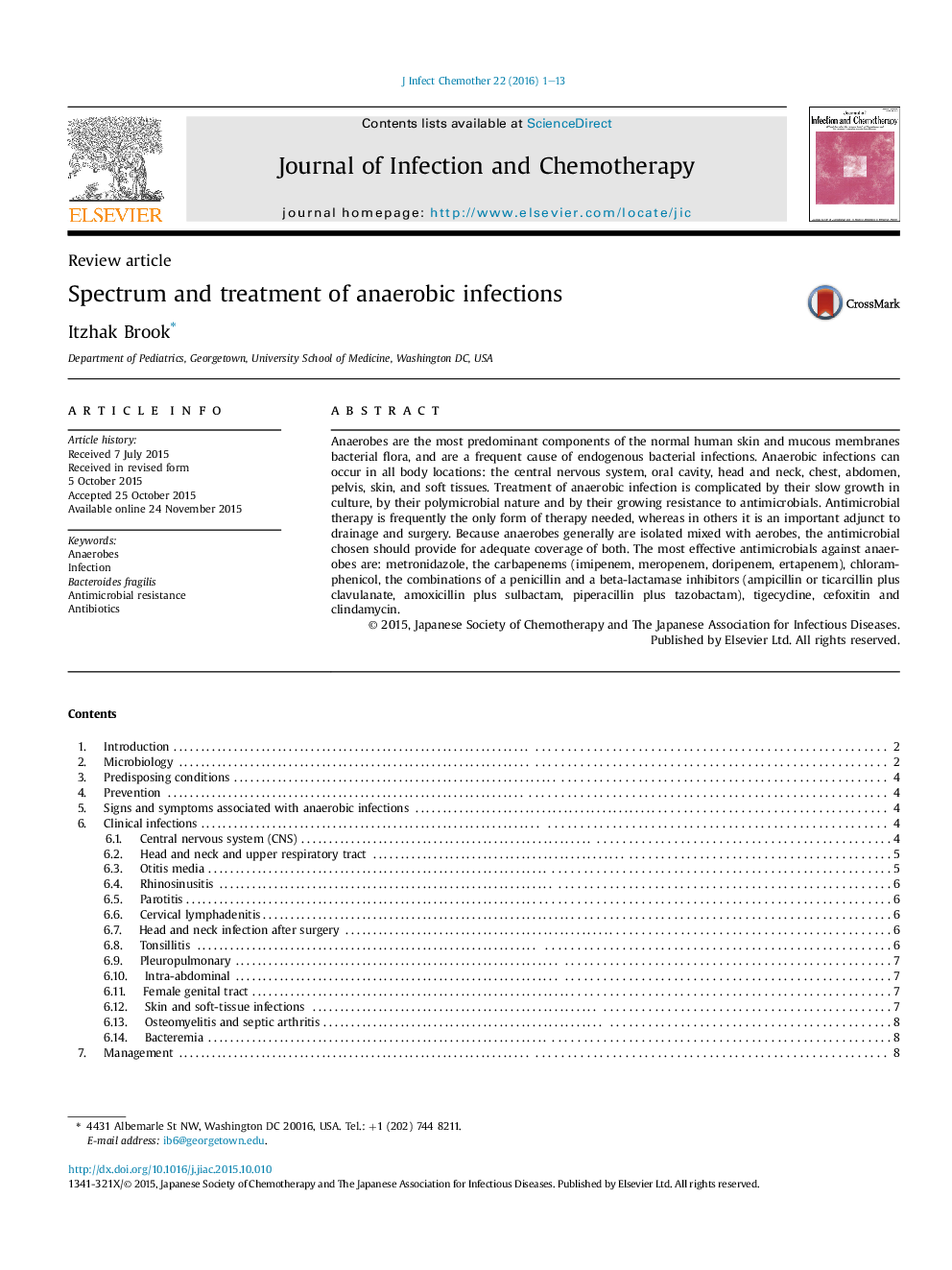| Article ID | Journal | Published Year | Pages | File Type |
|---|---|---|---|---|
| 3376792 | Journal of Infection and Chemotherapy | 2016 | 13 Pages |
Anaerobes are the most predominant components of the normal human skin and mucous membranes bacterial flora, and are a frequent cause of endogenous bacterial infections. Anaerobic infections can occur in all body locations: the central nervous system, oral cavity, head and neck, chest, abdomen, pelvis, skin, and soft tissues. Treatment of anaerobic infection is complicated by their slow growth in culture, by their polymicrobial nature and by their growing resistance to antimicrobials. Antimicrobial therapy is frequently the only form of therapy needed, whereas in others it is an important adjunct to drainage and surgery. Because anaerobes generally are isolated mixed with aerobes, the antimicrobial chosen should provide for adequate coverage of both. The most effective antimicrobials against anaerobes are: metronidazole, the carbapenems (imipenem, meropenem, doripenem, ertapenem), chloramphenicol, the combinations of a penicillin and a beta-lactamase inhibitors (ampicillin or ticarcillin plus clavulanate, amoxicillin plus sulbactam, piperacillin plus tazobactam), tigecycline, cefoxitin and clindamycin.
